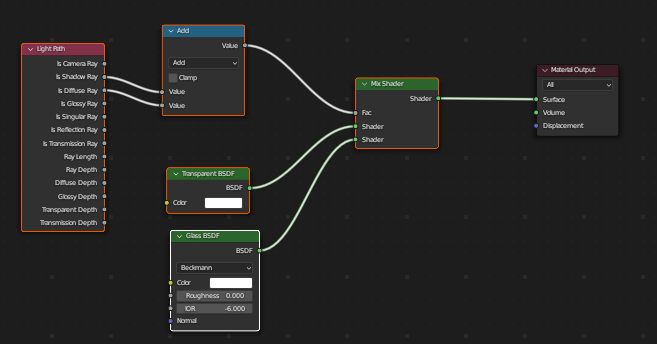I am really confused and dont know which one i should be using for my window glass material. I have found different glass nodes which one should i use

I am really confused and dont know which one i should be using for my window glass material. I have found different glass nodes which one should i use

Which one gives results that look better to you?
Also… (the usual answer) it depends…
Is it for a comic like /stylistic render or a ultra realistic hourlong render with megabyte of HDR images…
…and also what does your system or your patience can handle ![]()
(… sometimes just increasing the reflections bound helps…)
I wouldn’t use any of them, they all look suspicious. It also depends on if the glass has thick geometry, several layers of thick geometry, or thin (single face) geometry, and also if the solid geometry glass edge will be visible which can happen for glass doors and glass railings. What’s wrong with them?
Regarding solid glass which I use for internal glass walls and railings: Note that fully white Transparent shader will provide full light transport, whereas in real life a flat glass pane will cause more shadows at grazing angles. So technically you should darken the shadows using 1 - (Layer Weight 0.5 → Power 5 → Add 0.05), although for all intents and purposes this probably don’t matter much except to your own ego ![]()
These kinds of hacks made more sense earlier when we might turn off shadow caustics to do the light transport (shadows would be black from the Refraction shader). With all caustics enabled and enough samples to do the render, these hacks aren’t that critical anymore. I recommend doing test renders using Transparent shader alone and compare the result using a Glass shader (with green tinted Volume absorption) alone without any additional hacks. If there is significant energy loss, then mix in Transparent shader at the end using isShadowRay, and add isDiffuseRay if it’s still not enough.
Regarding thin geometry based glass, which I only use for external windows where I’ll never see the edge: I just use the Power formula above to mix Transparency with a sharp Glossy to mimic fresnel very closely and call it a day; no normals that can screw you over which is the case using fresnel node, and no infinite thickness like you get using Refraction node. While you won’t get double (or quadruple or sixtuple) reflections like in real multilayered glass, these are artifacts that usually don’t make the image any prettier.
If you use the new path guiding function - you may not have to use the window glass trick at all as it can handle light transport through refractive glass just fine.
It is CPU only at the moment - so may come with a significant performance hit vs using the light path tricks - but it’s another option to explore if you aren’t getting the results you expect.